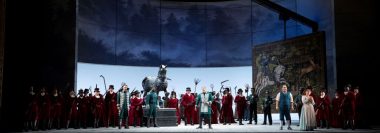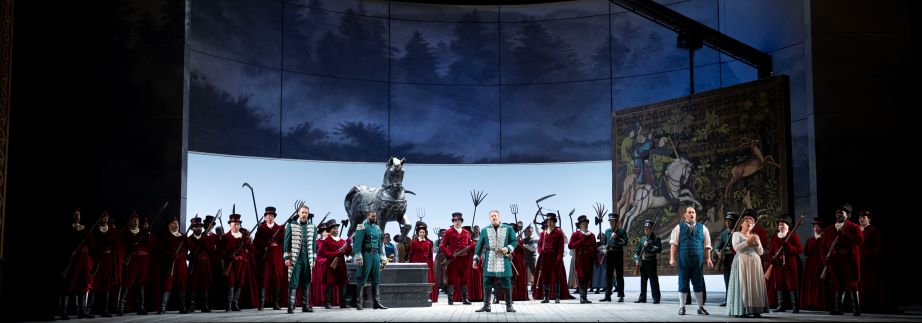 United States Verdi, Luisa Miller: Soloists, Orchestra of Lyric Opera of Chicago / Enrique Mazzola (conductor). Civic Opera House, Chicago. 12.10.2019. (JLZ)
United States Verdi, Luisa Miller: Soloists, Orchestra of Lyric Opera of Chicago / Enrique Mazzola (conductor). Civic Opera House, Chicago. 12.10.2019. (JLZ)

Production:
Director – Francesca Zambello
Set designer – Michael Yeargan
Costume designer – Dunya Ramicova
Lighting designer – Mark McCullough
Chroreographer – August Tye
Chorus master – Michael Black
Cast:
Luisa – Krassimira Stoyanova
Rodolfo – Joseph Calleja
Miller – Quinn Kelsey
Walter – Christian Van Horn
Wurm – Soloman Howard
Frederica – Alisa Kolosova
After an absence of thirty years, Verdi’s Luisa Miller (1849) returned to the stage at Lyric Opera of Chicago, from the internationally acclaimed director Francesca Zambello. In her online comments about the opera, Zambello stated that ‘although we no longer live in a literal world of princes and peasants, the class warfare at the heart of Luisa Miller feels very contemporary to me, which makes the opera’s tragic ending extraordinarily moving’. To make the story’s class struggle relevant to modern audiences, Zambello offers a fresh staging of this Italian adaptation of the German playwright’s Kabale und Liebe (Love and Intrigue).
The plot involves a forced letter that complicates strained relationships to such a degree that Luisa and Rodolfo take poison instead of confronting the fates others intend for them. It is a narrative that plays on binary oppositions, which Verdi heightens in his score.
Zambello presents the three acts in two parts, with an intermission after the first. This allows for continuity between Acts II and III, in which the consequences of the various schemes appear. The continuity implied in the libretto is borne out in the set, an Alpine scene displayed in a series of panels, one of which serves as a door for entrances and exits. The machinery above the stage allows for additional panels to appear as needed, such as the opening scene: the painting that separates Luisa from the villagers lifts to allow her to appear in her house as swiftly as the music connotes.
The costumes help, too. Uniform crimson-and-black costumes for the nobility set them apart from the varied outfits of the citizenry — especially noticeable at the conclusion of Act I, in which the two groups are poised directly against each other. Here the production etched the conflict with striking clarity, underscored by the rapt attention of the audience.
In the second and third acts, the stage serves as the chambers of either Count Walter or Luisa, and the economical design allows the audience to focus on the individual characters. Quinn Kelsey was a winning Miller, and the sensitive approach he used several seasons ago in Lyric’s Rigoletto served him well here. In a sense, the character is the opera’s linchpin.
Kelsey’s clarity of line was present throughout, but particularly evident in the first act aria ‘Sacra la scelta’. While his sense of pitch and line were solid, he deftly bent the rhythms with carefully placed rubato. In explaining himself to Wurm – sung by Solomon Howard – Kelsey’s body language demonstrated the strength of his convictions. When it comes to convictions, though, Howard brought out the passion for Luisa that drives Wurm to scheme for her hand. His sustained dynamic levels in the Act II letter scene with Luisa showed Wurm’s determination to have his way.
In the title role, Krassimira Stoyanova was particularly effective in the third act, where she brought out the passion at the core of Verdi’s score. As Walter, Christian Van Horn made the character driven, as he should be, without overacting and commanding a full, clear voice. As the Duchess, Alisa Kolosova gave a winningly idiomatic reading, especially in the scene with Rodolfo, where her scorn adds to the intrigues that will doom him and Luisa. Kolosova’s flexible soprano was a pleasure, filled with clarity, grace, and assurance. Joseph Calleja was strong as Rodolfo, particularly in the final scene with his character’s conflicting emotions.
James L. Zychowicz
